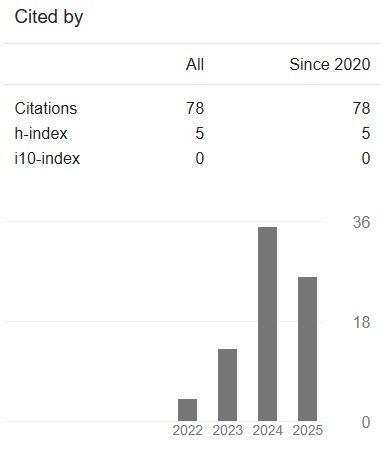Analysis of 3D Printing Filament Using Polyvinyl Alcohol (PVA)
Keywords:
polyvinyl alcohol, polylactic acid, 3D printing, biodegradableAbstract
The widespread adoption of 3D printing as a manufacturing method across various industries offers a diverse range of filaments tailored to specific printing requirements. However, the production of intricate designs presents challenges, particularly in the removal of support structures. This research explores the manual removal and aqueous dissolution times, evaluating resultant model quality. Categorizing eighteen samples into simple, medium, and complex groups, each comprising three units forms the basis for assessing Polyvinyl Alcohol (PVA) filament’s impact on support structures and overall model quality. Nine samples exclusively use Polylactic Acid (PLA) as a control group, while the remaining nine integrate PVA filament, ensuring a comprehensive examination of PVA's influence on different design complexities. For meticulous design, Autodesk TinkerCAD meticulously guides the design process with precision, utilizing two 3D printers: the Creality Ender 3, exclusively using PLA filament, and the Ultimaker 3 Extended, equipped with dual print cores and utilizing both PLA and PVA filaments. The inclusion of PVA as a support material proves pivotal in facilitating the printing of intricate designs due to its facile removal and environmentally friendly properties. The PVA is better at support compare to PLA with lesser damage. This study significantly contributes to optimizing 3D printing processes, addressing challenges related to intricate designs and support structure removal. The findings are relevant for industries relying on precise components through 3D printing, marking a stride towards enhanced manufacturing efficiency.
Downloads
References
N. Shahrubudin, T. C. Lee, and R. Ramlan, “An Overview on 3D Printing Technology: Technological, Materials, and Applications,” Procedia Manuf, vol. 35, pp. 1286–1296, 2019, doi: 10.1016/j.promfg.2019.06.089.
M. Ziaee and N. B. Crane, “Binder jetting: A review of process, materials, and methods,” Addit Manuf, vol. 28, pp. 781–801, Aug. 2019, doi: 10.1016/j.addma.2019.05.031.
D. Svetlizky et al., “Directed energy deposition (DED) additive manufacturing: Physical characteristics, defects, challenges and applications,” Materials Today, vol. 49, pp. 271–295, Oct. 2021, doi: 10.1016/j.mattod.2021.03.020.
D. T. Pham, S. Dimov, and F. Lacan, “Selective laser sintering: Applications and technological capabilities,” Proc Inst Mech Eng B J Eng Manuf, vol. 213, no. 5, pp. 435–449, May 1999, doi: 10.1243/0954405991516912.
S. Junk and C. Kuen, “Review of Open Source and Freeware CAD Systems for Use with 3D-Printing,” Procedia CIRP, vol. 50, pp. 430–435, 2016, doi: 10.1016/j.procir.2016.04.174.
T. Mikolajczyk, T. Malinowski, L. Moldovan, H. Fuwen, T. Paczkowski, and I. Ciobanu, “CAD CAM System for Manufacturing Innovative Hybrid Design Using 3D Printing,” Procedia Manuf, vol. 32, pp. 22–28, 2019, doi: 10.1016/j.promfg.2019.02.178.
G. IJ. Salentijn, P. E. Oomen, M. Grajewski, and E. Verpoorte, “Fused Deposition Modeling 3D Printing for (Bio)analytical Device Fabrication: Procedures, Materials, and Applications,” Anal Chem, vol. 89, no. 13, pp. 7053–7061, Jul. 2017, doi: 10.1021/acs.analchem.7b00828.
S. Mallakpour, F. Tabesh, and C. M. Hussain, “A new trend of using poly(vinyl alcohol) in 3D and 4D printing technologies: Process and applications,” Adv Colloid Interface Sci, vol. 301, p. 102605, Mar. 2022, doi: 10.1016/j.cis.2022.102605.
J.-H. He, “Hilbert cube model for fractal spacetime,” Chaos Solitons Fractals, vol. 42, no. 5, pp. 2754–2759, Dec. 2009, doi: 10.1016/j.chaos.2009.03.182.
Downloads
Published
How to Cite
Issue
Section
License
Copyright (c) 2024 Muhammad Iman Sufi Suliman, Muhammad Nur Iqmal Azmee, Abdul Hakim Abdullah, Ahmad Khushairy Makhtar , Nor Fazli Adull Manan

This work is licensed under a Creative Commons Attribution 4.0 International License.









